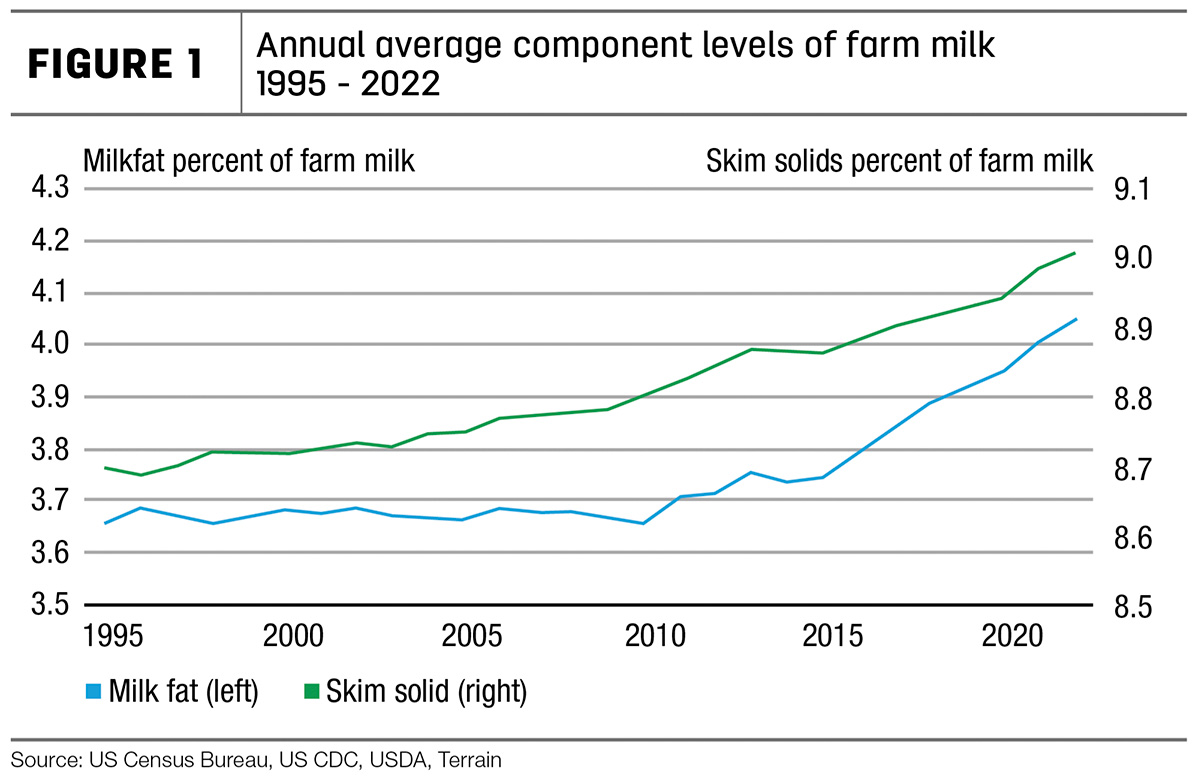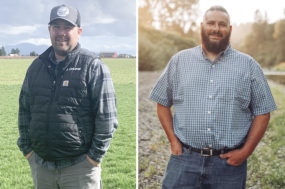The U.S. population is approaching several demographic milestones that all point to an older, more diverse population. Milk producers will need to begin thinking about growth differently against the backdrop of slowing population growth. Rather than the national herd adding cows to make more milk, there will be advantages to increasing component production in a way that aligns with the demands of this shifting population.
The U.S. population trends are critical developments for the dairy industry to follow since the domestic market makes up between 80% to 85% of milk volume demand and more than 90% of value. I recently took a deep dive into demographic and dietary data to investigate these developments in my report, “Dairy Consumers of the Future: Changing Focus to Components.”
When we talk about milk demand in the U.S., we are really talking about products like cheese, butter, yogurt and ice cream, as well as fluid milk. People consume different amounts of these products throughout their life. Dairy consumption may start with infant formula, before moving onto fluid milk and flavored milk, to pizza, cheese and, eventually, healthy aging products and nutrition shakes.

So when faced with an aging population, we need to consider that the underlying product mix to meet the needs of that older population will look different than it does now, and the resulting demand for components like milkfat and skim solids at the farm level will change along with it.
By 2030, all baby boomers will be older than 65 years old. By 2034, the U.S. Census Bureau predicts, older adults will outnumber children for the first time in history. An aging population means slower population growth. Growth could be about 1.8 million more people per year through 2050, compared to an average of about 2.3 million more people per year since 2010.
Per-capita dairy demand still has some room to grow, but it probably won’t be able to grow fast enough to offset the slower population growth and keep the current dairy volume consumption trend at its current growth rate.
So an aging population does not seem to bode well for demand. After all, milkfat consumption typically peaks in the teens and 20s, while consumption of skim solids peaks among those younger than 20, thanks to the younger demographic’s higher fluid milk consumption. But there are some encouraging signs.
By 2060, the population over 65 years old will nearly double, and the population over 85 years old will nearly triple. These age groups showed the strongest gains in per-capita milkfat demand between 2010 and 2020. The older population was also the only age group to show a positive gain in skim solids demand.
Based on my projections, domestic demand for milkfat should increase at a rate of about 1% per year through 2050, and skim solids will likely remain flat at current levels. In both cases, this is a slowing from current growth rates. In the case of fat, the slower rate is mostly a result of slower population growth, while the flat demand for skim solids is a combination of slower population growth and slower per-capita demand.
If we maintain the current trajectory in increases for milk per cow as well as for component levels, we will easily produce enough to match 2050’s additional U.S. demand. And the industry should be able to do so without adding more cows to the U.S. herd.
Component production will need to disproportionately favor milkfat. This has already been the case for the past decade, as we have seen favorable fat values incentivize production. The average fat test of U.S. milk has climbed from 3.65% in 2010 to 4.09% in 2022, and it continues to climb thanks to a combination of genetics, feed and management improvements.
Exports need to be considered, too. Exports have traditionally been an outlet for surplus skim solids, but even exports have been tilting toward milkfat recently in the form of cheese.
Global markets were beyond the scope of my research, but they play an increasingly important role in U.S. dairy. The markets that are importing our dairy products are going through demographic shifts of their own. The declining population in China has grabbed headlines recently and will have meaningful impacts on dairy markets as the world’s largest importer of dairy. Booming populations in other parts of the world, like Africa, will potentially provide new market opportunities, but potentially with a much different product mix than we have grown accustomed to in China and Southeast Asia.
All these trends will play out over the course of decades. There will continue to be short-term ups and downs and normal market dynamics along the way. However, long-term planning should take these population shifts into consideration. The aging U.S. population could have implications for feed alterations for medium-term adjustments and herd genetics in longer-term planning.







